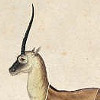



|
|
|
Title | The Natural History of Unicorns
| |
Series | ---
| |
Author | Chris Lavers
| |
Illustrator | ---
| |
Publisher | HarperCollins - 2009
| |
First Printing | Granta - 2009
| |
Category | Reference
| |
Warnings | None
| |
Main Characters
|
---
| |
Main Elements | Unicorns
|
|

Where did the unicorn come from, and how was it accepted as a part of the animal kingdom for so long? The author follows the beast's trail to the plateaus of India and into the jungles of Africa to unearth the flesh and blood ancestors of our iconic unicorn, finding traces of it in a hotchpotch of existing species.

I found this an excellent book delving into the origins of the unicorn legend. I recommend first reading Odell's Shepard's Lore of the Unicorn, not only is that one considered a classic, but given it was written in the 1930's, much has changed since. Laver's book, written in the 2000's updates us on some of those new findings, as well as being a natural historian, has much more accurate knowledge of the animals of the world than Shephard had, coming up with more convincing suggestions as to the animals that may have played a part in defining the unicorn. He references Shepard's work quite a bit, filling in some of the gaps and fixing some of the errors, so definitely makes sense to read them together.
It is written in a much easier to read style than Shepard's, after all The Lore of the Unicorn is a kind of academic treatise, a book written by a scholar. Laver's wrote for modern readers and explained things well in an easy to understand manner. Where it took me weeks to get through The Lore of the Unicorn, I nearly breezed through The Natural History of Unicorns.
Lavers appeared at times to get off track, telling tales that didn't on the surface appear to have anything at all to do with unicorns, however there is no way to know exactly how all the pieces came together. A one horned beast over there, a wild hairy grass eating man that could only be tamed by a maiden there, with a mix of three-legged ass (with six eyes and nine mouths) to purify the waters.
Once again, the reader is reminded that people didn't think the unicorn was a magical beast. It's powers were those that could be found in other beasts, but the single horn amplified it, and of course the rarity made it all the more precious. It wasn't until we had explore the deepest parts of Africa, and the heights of Tibet and found no sign of the elusive beast that we finally decided it wasn't real (at least not anymore) that the unicorn became truly a mythological creature, of magic and dream and imagination. The white horse with the golden horn that could heal with a touch and gallop on rainbows. After reading these books you'll never look at unicorns the same way again.
|